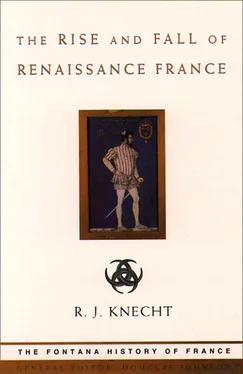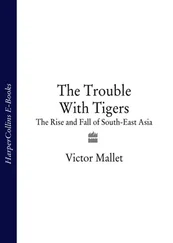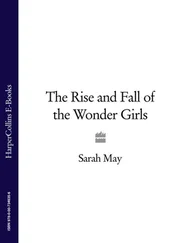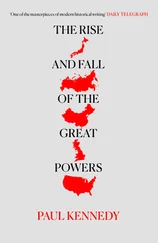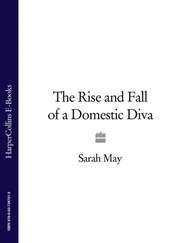Historians have often assumed that the rivalry which developed between Francis and Charles stemmed from the imperial election. Francis was undoubtedly vexed by the result, particularly as he had wasted some 400,000 écus on bribes. But his disappointment was dwarfed by the political implications of the election. Before Charles could be a fully-fledged emperor, he needed to be crowned by the pope in Italy. He was likely to go there in force and would almost certainly threaten Francis’s hold on Milan, particularly as the emperor was the duchy’s suzerain. The pope, too, had reason to fear Habsburg domination of the peninsula. On 22 October he signed a secret treaty with Francis. While the king promised to defend the States of the Church against Charles, Leo undertook to deny Charles the investiture of Naples.
The Field of Cloth of Gold (June 1520)
The imperial election brought France and England closer together. Whereas in the past there had been four major powers in Europe, France, Spain, England and the Empire, now there were only three, Spain and the Empire having become joined in the person of Charles V. As France and the new Habsburg state seemed of roughly equal weight, England’s position was enhanced. Cardinal Wolsey, who directed Henry VIII’s foreign policy, revived the idea, first mooted in 1518, of a meeting between Henry and Francis. On 12 March he laid down the conditions of what has become known as the Field of Cloth of Gold. Charles, whose aunt Catherine of Aragon was Henry’s queen, tried hard to prevent the meeting or to secure its postponement. He visited England on his way from Spain to Germany and held talks with Henry VIII, but no one knows what they decided.
The Anglo-French meeting took place in June at a site between the English town of Guînes and the French town of Ardres. Providing suitable accommodation for the large number of participants was probably the biggest headache for the organizers. Henry erected a large temporary palace outside Guînes castle, while Francis put up a superb tent covered with gold brocade and striped with blue velvet powdered with gold fleur-de-lys. It was the tallest of some 300 or 400 pitched in a meadow outside Ardres.
The Field of Cloth of Gold consisted of two events: the initial meeting of the kings on 7 June and a tournament or feat of arms scheduled to last twelve days. Henry and his court crossed the Channel on 31 May. Soon afterwards, Wolsey with a magnificent escort called on Francis at Ardres and signed a treaty which provided for the marriage between the Dauphin and Mary Tudor. On 7 June, at an agreed signal, the two kings, each accompanied by a large escort, moved towards the Val Doré, where they faced each other on two artificial mounds. After a fanfare, Henry and Francis rode towards the bottom of the valley. They spurred their mounts as if about to engage in combat, but instead embraced each other. After dismounting, they retired to a tent where they were joined by Wolsey and Bonnivet. An hour later they emerged and presented their respective nobles to each other.
The ‘feat of arms’, which began on 11 June, lasted till the 24th. Complicated regulations had been drawn up to prevent accidents. The two kings did not fight each other: they competed each with his own team. The famous story of Henry being worsted by Francis in a wrestling match is probably apocryphal. What is certain is that the king of France soon tired of the rigid etiquette that had been prescribed. On 17 June he paid Henry a surprise visit. Bursting into his chamber, he exclaimed: ‘Brother, here am I your prisoner!’ Not to be outdone, Henry turned up in Francis’s bedroom two days later. This put everyone in a good mood. On 23 June mass was celebrated by Wolsey amidst great pomp on the tournament field. The two royal chapels sang alternate verses of hymns accompanied by an organ, trombones and cornets. Afterwards the pope’s blessing was conferred on both kings. Louise of Savoy announced that her son and Henry intended jointly to build a palace in the Val Doré where they might meet each year, and also a chapel dedicated to Our Lady of Friendship.
Francis I incurred heavy expenses from the start of his reign. Having inherited a deficit of 1.4 million livres from Louis XII, he had to pay for that king’s funeral and for his own coronation. The overall cost of the Marignano campaign has been estimated at 7.5 million livres. The Peace of Fribourg cost the French crown one million écus and inaugurated a system of pensions to the Swiss. In 1518, Francis paid 600,000 écus for the return of Tournai. The imperial election campaign may have cost him another 400,000 écus and the Field of Cloth of Gold at least 200,000l. In June 1517 the king’s council decided to levy supplementary taxes worth 1,100,0431. in an attempt to reduce the government’s deficit of 3,996,5061.
Francis did not substantially change either the burden or the structure of taxation during his reign. Royal income from taxes rose by an annual average of 1.44 per cent, which is moderate by comparison with the average of 2.38 per cent per annum under Louis XII and 5.7 per cent per annum under Henry II. The taille rose most in absolute terms: from about 2.4 million livres in 1515 to some 4.6 million in 1544–5 with a fall to 3.6 million in 1547. The rate of the gabelle in north and central France trebled during the reign, but over the whole kingdom its value was only 700,000l. in 1547 as compared with less than 400,000 in the early part of the reign. The aides and other indirect taxes are said to have risen from about 1.2 million to 2.15 million. Domainal revenues did not rise at all. The only tax created by Francis was one on walled towns to pay for infantry.
However, taxation estimates based on the central records are misleading, for a high proportion of the receipts were disbursed at the collection point and never reached the royal treasury. The actual burden of taxation was also heavier than is suggested by the central records, the sums imposed by local collectors being often in excess of the legal limits. The yield was also eroded by the costs of collection.
Although in theory the French church was exempt from direct taxation, the reality was different. In theory the clerical tenth or décime was a voluntary gift to assist the king in an emergency, yet in practice it became virtually a regular tax. Following the Concordat of Bologna, the pope allowed Francis to levy a tenth on the French clergy and he did so again in 1527 and 1533, but papal authorization was not regarded as essential; the initiative was often taken by the king alone. Altogether 57 tenths were levied under Francis and may have yielded a total of 18 million livres.
It was outside his regular income that Francis innovated most. To meet his immediate needs, he borrowed from merchants and bankers, most of them Italians who had settled in Lyon. They lent to the crown sometimes under constraint or in exchange for commercial concessions, but usually as a result of free speculative choice. The king was often prepared to pay high rates of interest. For example, a loan of 100,000 écus raised for the Field of Cloth of Gold carried an annual interest of 16.2 per cent. By 1516 the crown was already heavily in debt to the Lyon bankers.
Francis also borrowed heavily from his own tax officials, who were invariably men of substance. If for some reason the tax yield was lower than expected, a tax official might be asked to advance money from his own pocket. In return, he would be allowed to reimburse himself from the next year’s tax receipts. This was how taxes were ‘anticipated’. On a number of occasions the king helped himself to the inheritance of a wealthy subject. His first victim was the seigneur de Boisy who died in May 1519.
Читать дальше
